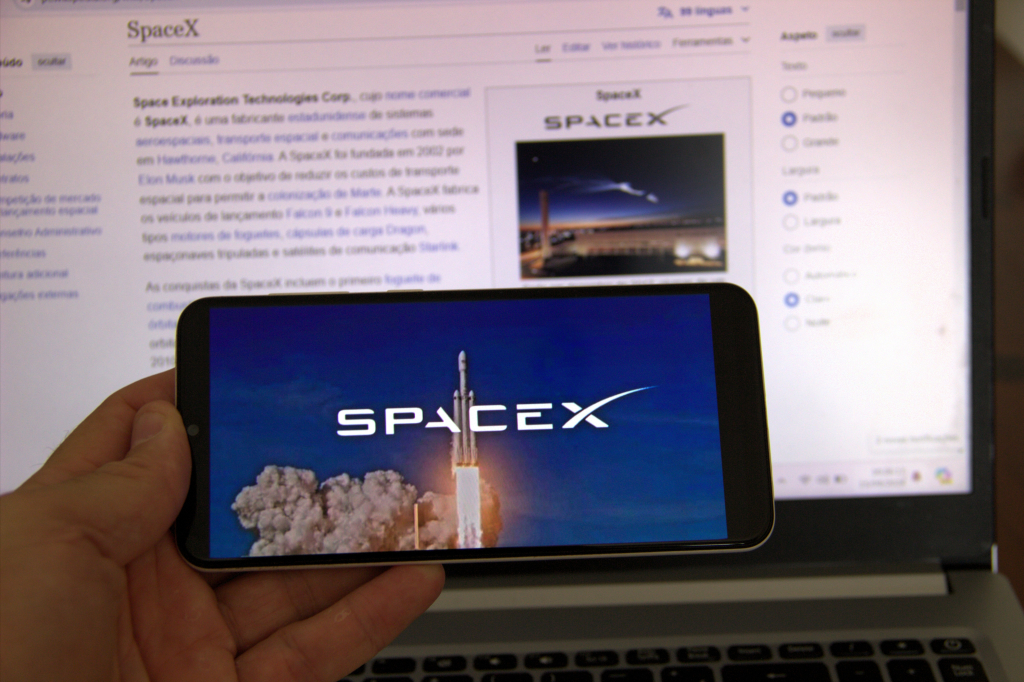
ORLANDO, Fla. – SpaceX’s highly anticipated eighth Starship test flight ended in failure Thursday evening when the spacecraft lost multiple engines, lost control, and ultimately exploded off the coast of Florida. The incident prompted the Federal Aviation Administration (FAA) to impose temporary ground stops at several major Florida airports, which were lifted approximately 90 minutes later.
Unscheduled Disassembly: What Happened?
The test flight, which launched at 6:30 p.m. ET, initially appeared successful, with Starship separating from its Super Heavy booster as planned. However, just over eight minutes into the flight, the spacecraft began losing altitude control. SpaceX engineers lost communication with Starship before the ascent phase was completed.
Shortly after, videos circulating on social media showed the vehicle exploding at approximately 90 miles (480,000 feet) above the Earth’s surface. SpaceX later confirmed the event, referring to it as a “rapid unscheduled disassembly.”
As a safety precaution, the FAA activated a Debris Response Area and briefly restricted air traffic in affected regions. Airports impacted by the ground stops included Orlando International (MCO), Miami International (MIA), Palm Beach International (PBI), and Fort Lauderdale–Hollywood International (FLL). Normal operations resumed shortly after 8 p.m. ET.
FAA to Oversee Investigation
The FAA has mandated a full mishap investigation to determine the cause of the failure. According to the agency, these investigations are designed to enhance public safety, identify root causes, and implement corrective measures to prevent future incidents.
“The FAA will provide oversight to ensure SpaceX complies with its mishap investigation plan and all regulatory requirements,” the agency stated. It will also coordinate response efforts with NASA, the National Transportation Safety Board (NTSB), and the U.S. Space Force as necessary.
Flight Performance: Key Figures
- Launch time: 6:30 p.m. ET
- Flight duration before failure: ~8 minutes
- Explosion altitude: 480,000 feet (90 miles)
- Top speed reached: ~12,427 mph
- Estimated debris velocity upon impact: 150-400 mph
Ongoing Questions and Next Steps
The exact cause of the engine failures remains unknown. SpaceX has not yet provided a detailed report, and it is unclear whether modifications made after January’s failed test flight contributed to or mitigated this latest incident. Investigators are now analyzing debris and flight data to determine what went wrong.
A Pattern of Challenges
This latest failure follows a similar incident on January 16, 2025, when a fire near Starship’s liquid oxygen tank led to an explosion. SpaceX later identified excessive vibration in the propulsion system as the likely cause. In response, engineers implemented design modifications, including adjustments to fuel lines and additional venting systems.
Despite setbacks, SpaceX remains optimistic.
“Each test provides critical insight into Starship’s capabilities, and we continue to iterate and improve,” a company spokesperson stated.
Expert Insights on the Failure
Space analyst Zac Aubert, who runs The Launchpad Network, noted that this failure closely resembles the January incident.
“Once Starship started tumbling, recovery became nearly impossible, especially with ongoing engine failures,” Aubert explained. He emphasized the vehicle’s scale, calling it significantly larger than familiar rockets such as SpaceX’s Falcon 9 or NASA’s Space Launch System (SLS).
Looking Ahead
While the Starship spacecraft was lost, SpaceX successfully executed the controlled return and capture of its Super Heavy booster using its launch tower, known as Mechazilla. The company will now analyze flight data and assess next steps before proceeding with future test launches.
The FAA’s investigation will be crucial in determining the path forward for Starship, which remains a cornerstone of SpaceX’s ambitions for deep-space exploration, including potential missions to Mars.




